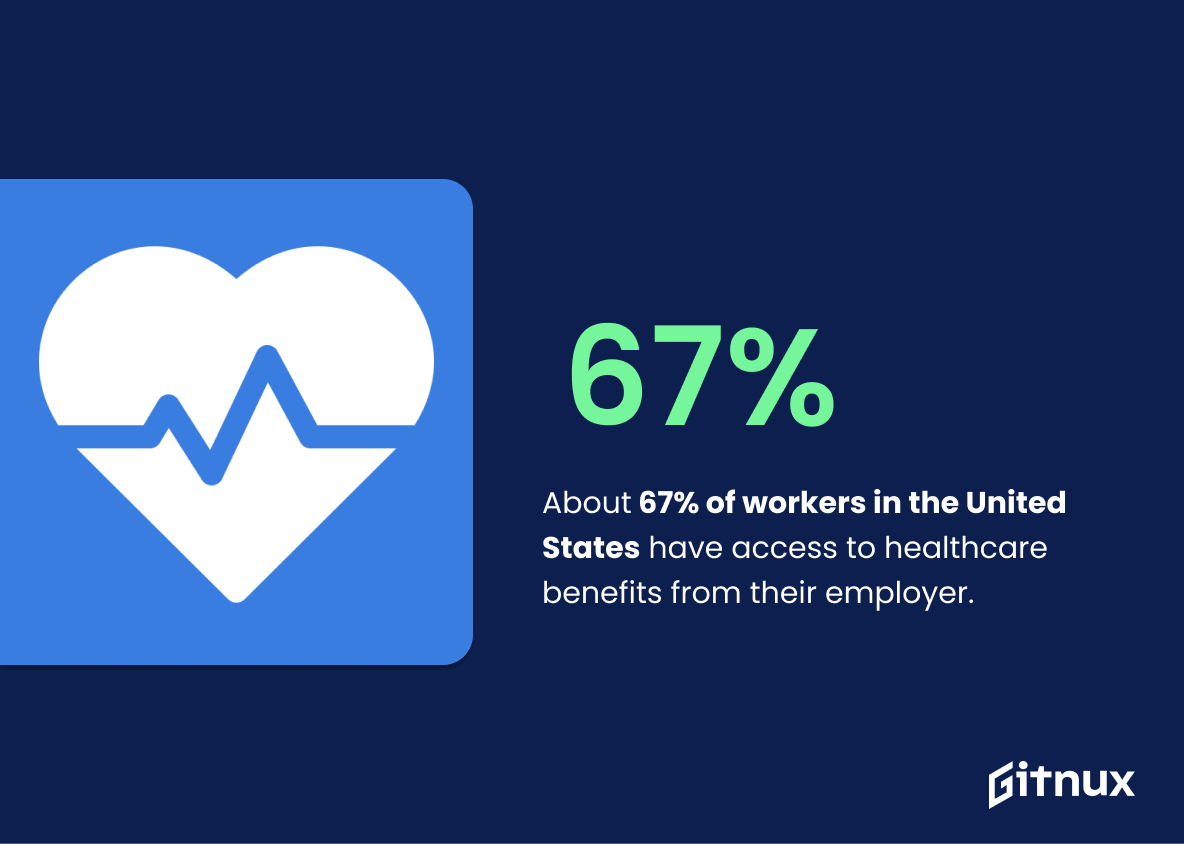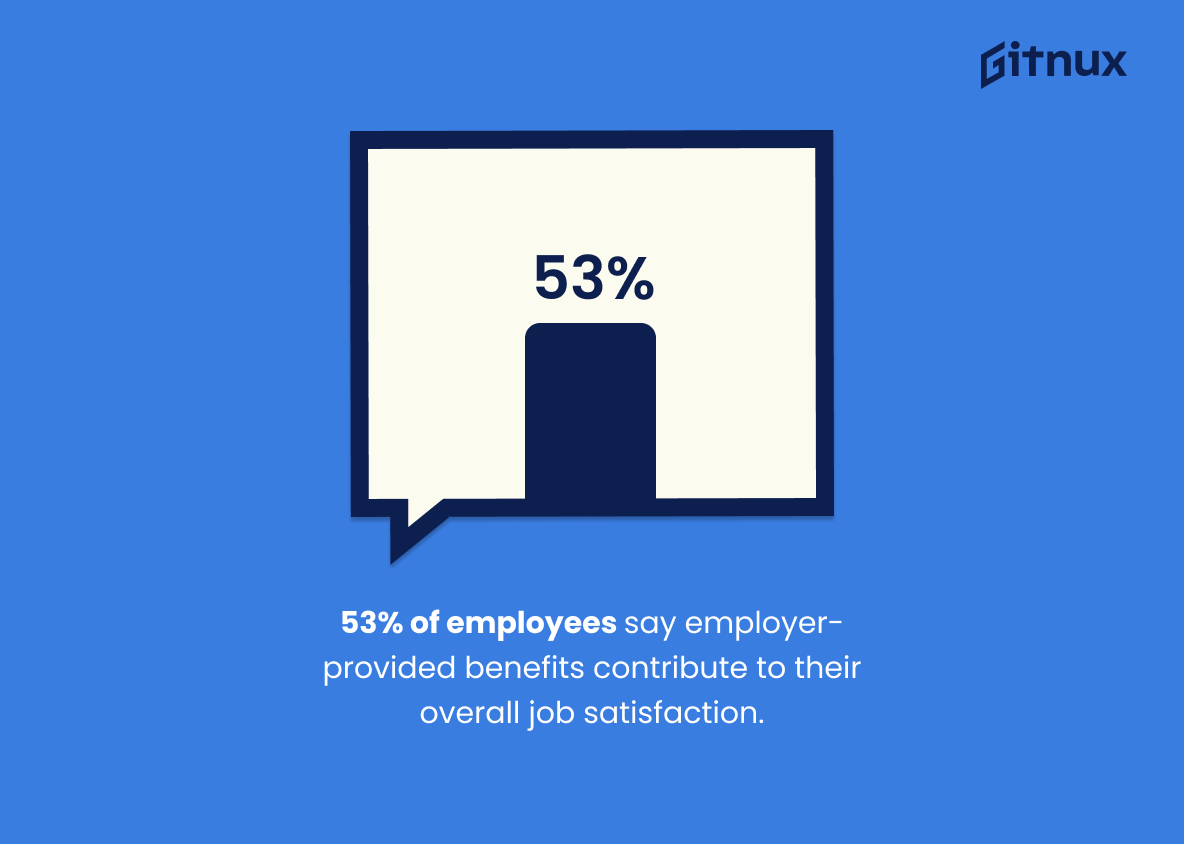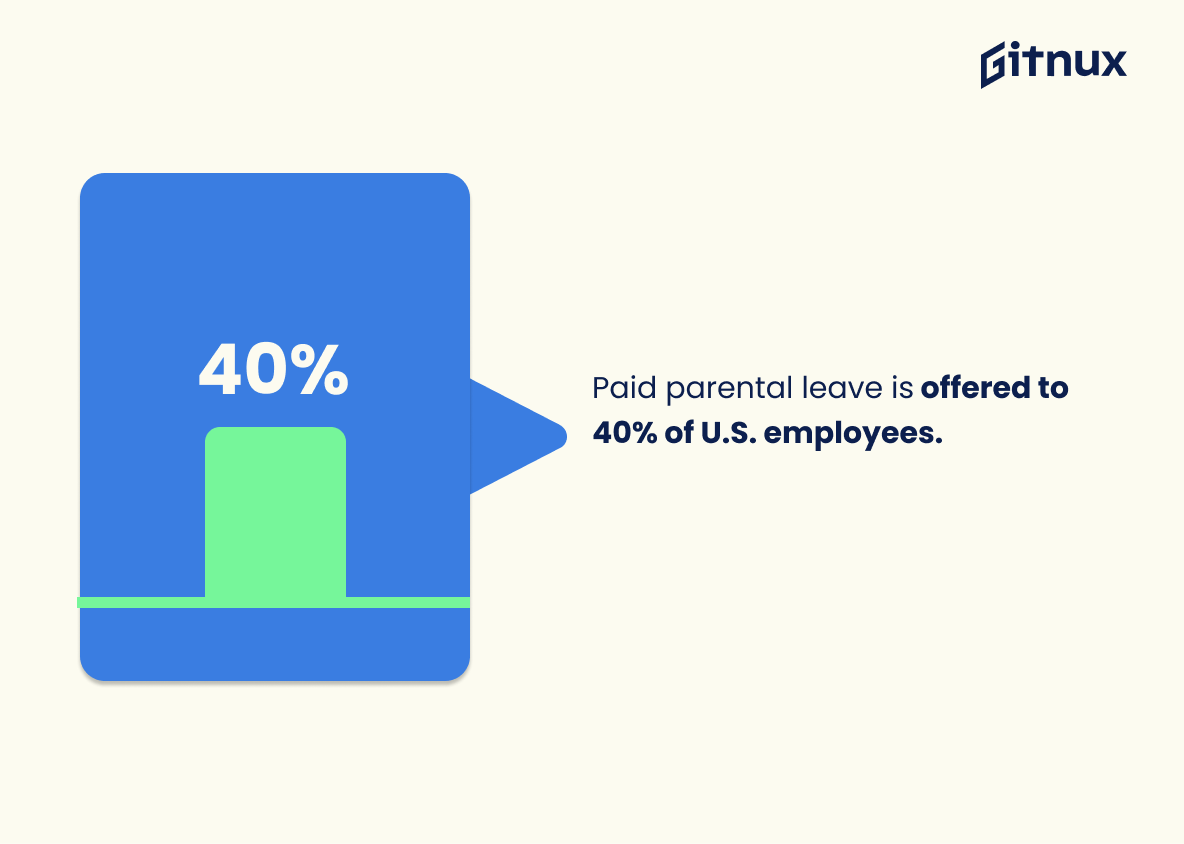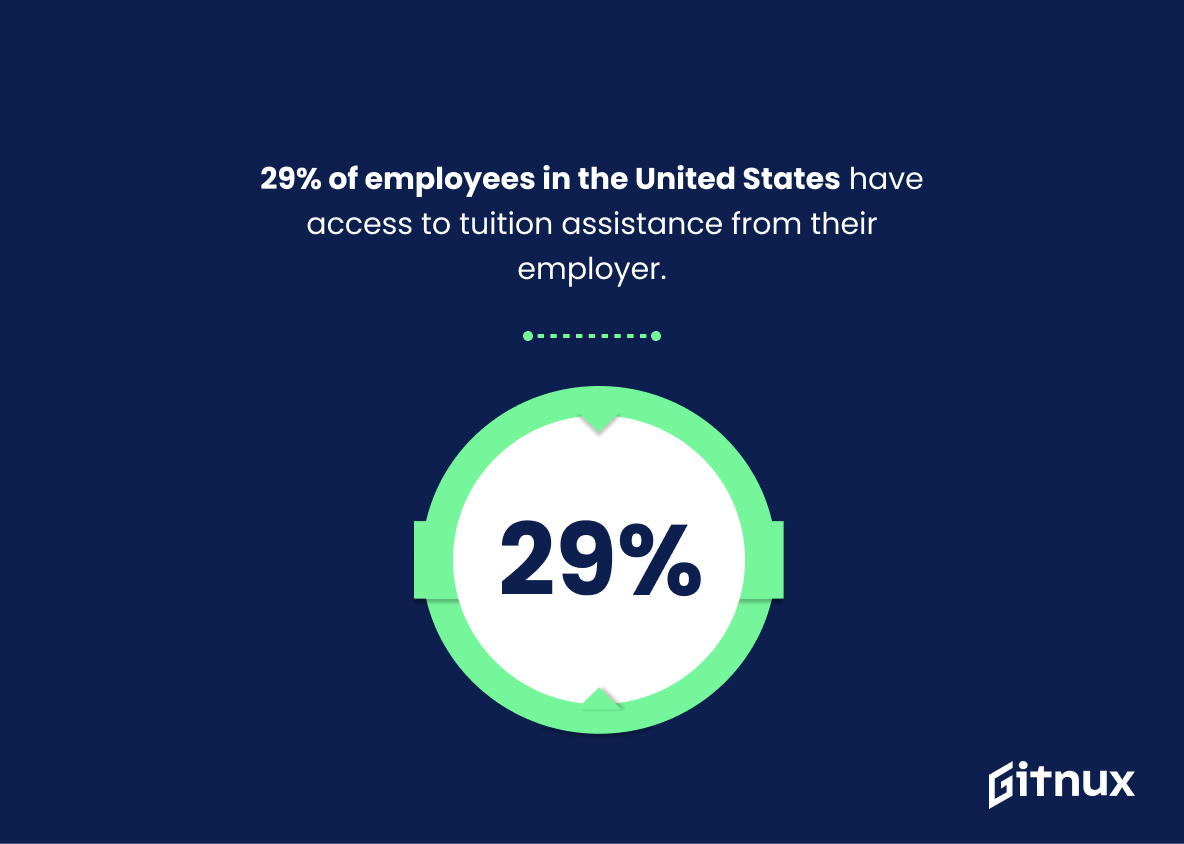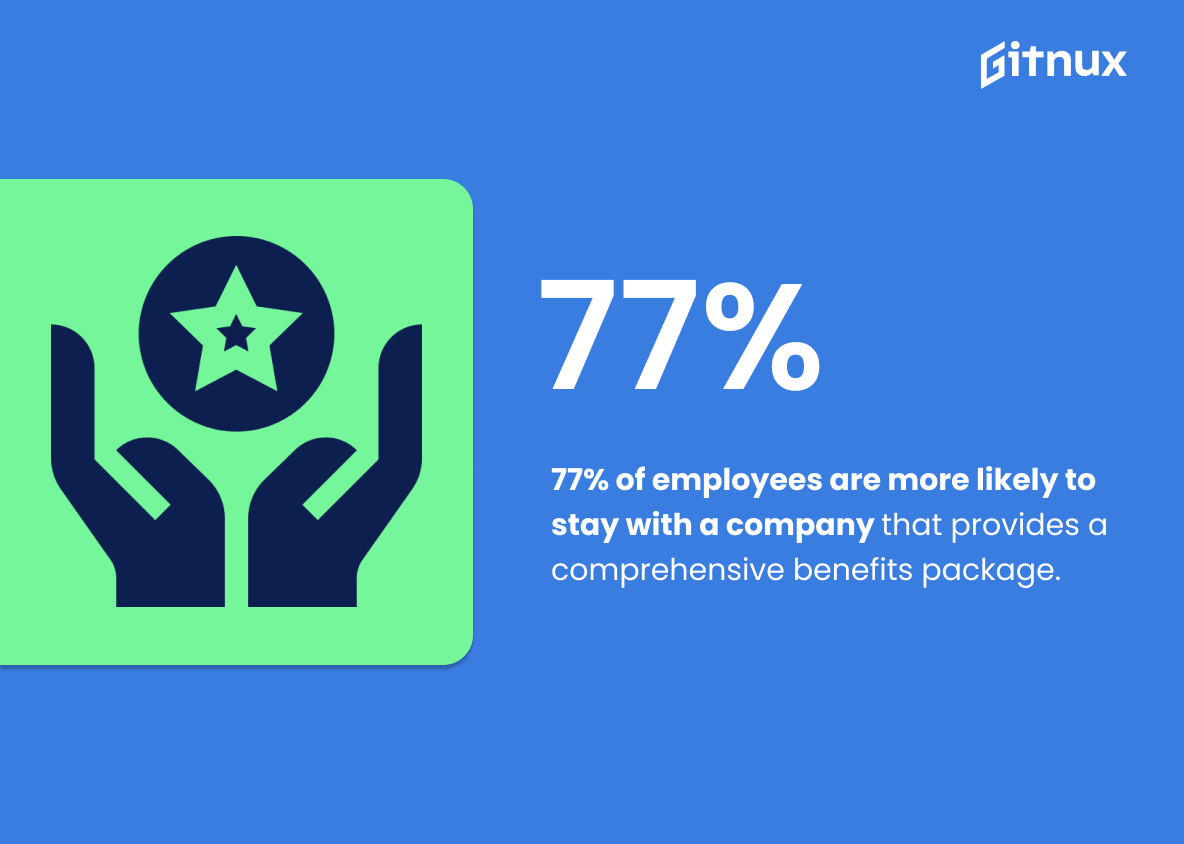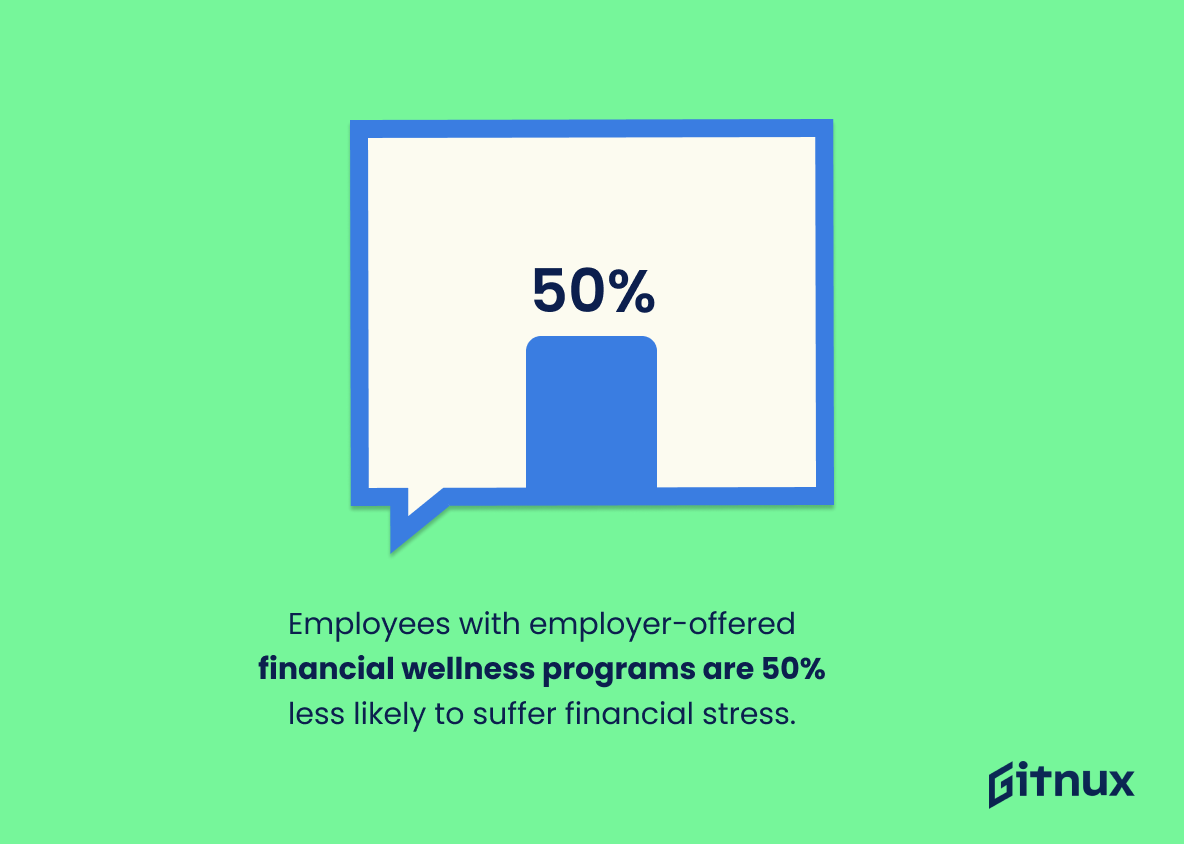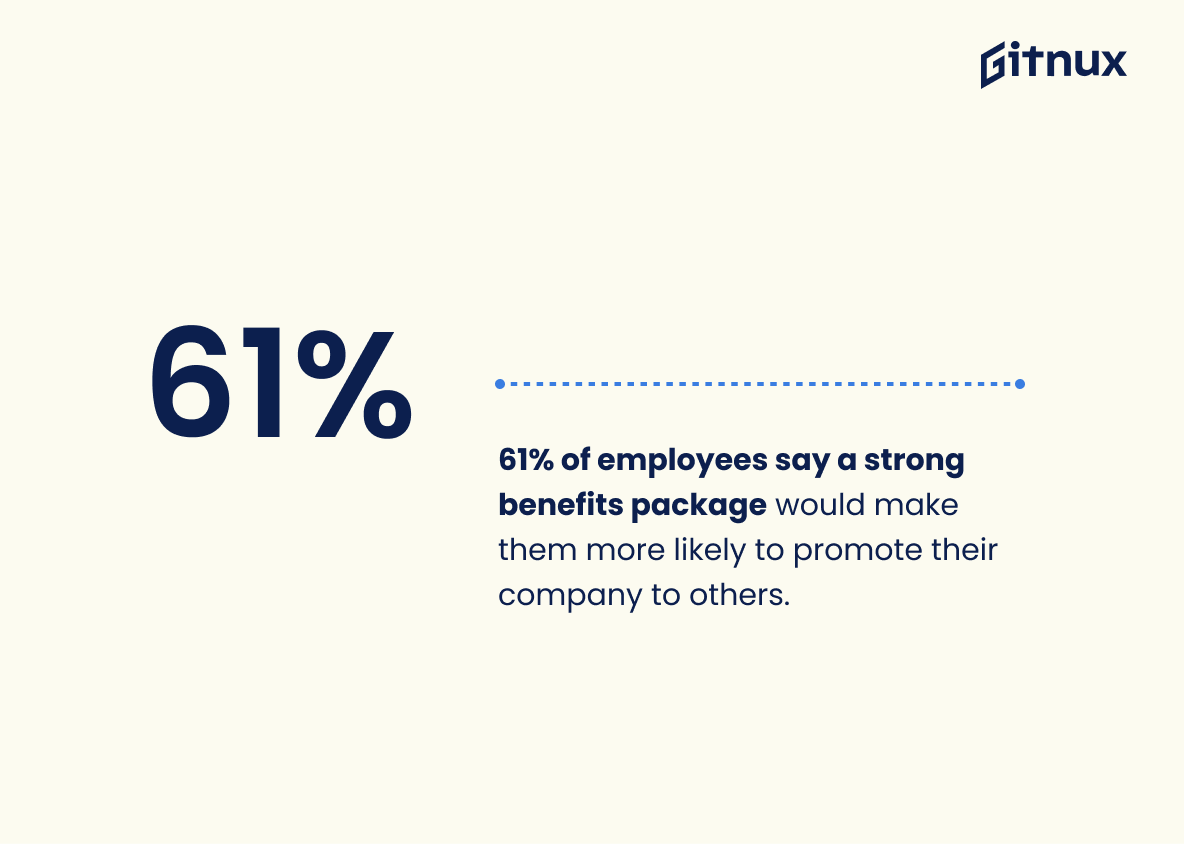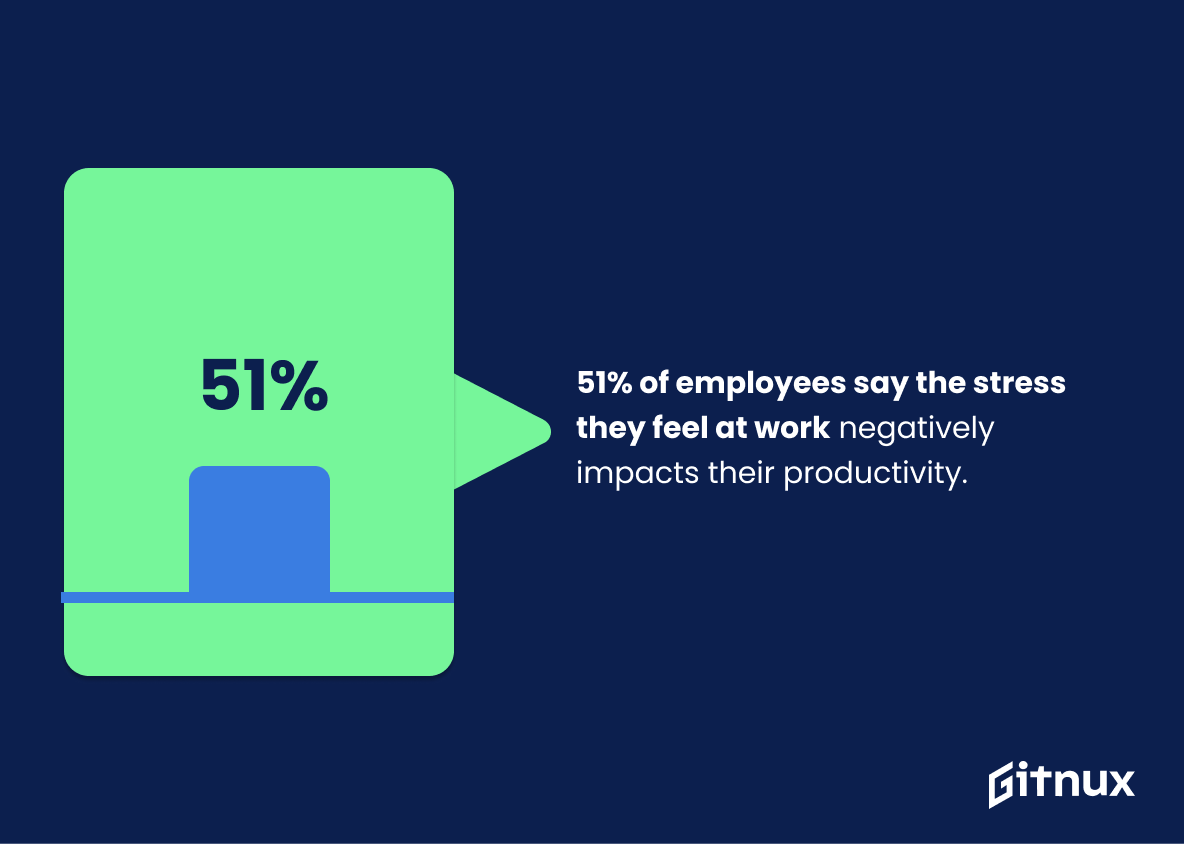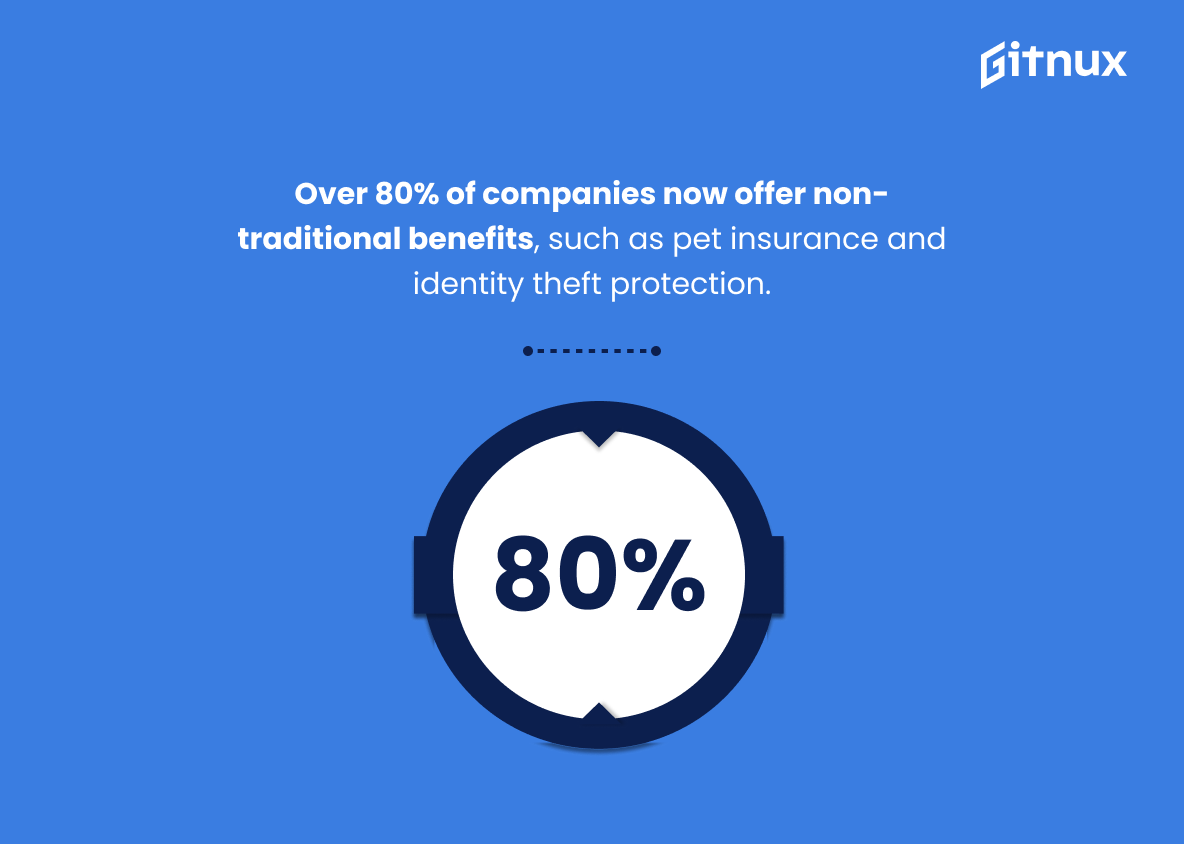Employee benefits are an important part of any job, and the statistics show that they can have a significant impact on employee satisfaction. According to recent studies, 80% of employees would choose additional benefits over a pay raise, while approximately 60% of workers in the United States have access to retirement benefits. Additionally, 67% of U.S. workers have access to healthcare from their employer and 53% say these provided benefits contribute to overall job satisfaction.
Companies offering flexible hours and work arrangements also benefit from lower turnover rates; 70% of American workers consider company-provided benefits when deciding whether or not to accept a job offer; wellness programs make employees 70% more likely exercise regularly; 76 % prioritize mental health but less than 50 % actually receive it as part of their package; 56 % prioritize strong perks over salary when choosing jobs ; 40 % get paid parental leave ; 52 % think employers should provide assistance with long term care insurance ; 29 percent get tuition assistance , 36 percent understand basic details about their packages , 77 percent stay longer if comprehensive packages are offered , financial stress is reduced by 50 per cent for those who avail such services & 51 per cent feel stressed due lack productivity . Finally 81 per cent companies now offer non traditional options like pet insurance & identity theft protection . All this goes on show how much importance employers place on providing quality employee benefit plans which help them attract top talent & retain existing ones too .
This statistic is a powerful indicator of the importance of employee benefits in the workplace. It shows that employees value the additional benefits they receive more than a pay raise, which speaks to the importance of offering a comprehensive benefits package to employees. This statistic is especially relevant in a blog post about Employee Benefits Statistics, as it provides a clear example of the value of benefits to employees.
Approximately 60% of workers in the United States have access to retirement benefits.
This statistic is a telling indication of the importance of retirement benefits in the United States. It highlights the fact that a majority of workers have access to retirement benefits, which is essential for financial security in the future. This statistic is especially relevant in a blog post about Employee Benefits Statistics, as it provides a snapshot of the current state of retirement benefits in the country.
Employee Benefits Statistics Overview
About 67% of workers in the United States have access to healthcare benefits from their employer.
This statistic is a powerful indicator of the importance of healthcare benefits in the workplace. It shows that the majority of employers in the United States recognize the value of providing healthcare benefits to their employees, and are willing to invest in their health and wellbeing. This statistic is a testament to the importance of employee benefits in the modern workplace, and serves as a reminder of the need for employers to continue to prioritize the health and wellbeing of their employees.
53% of employees say employer-provided benefits contribute to their overall job satisfaction.
This statistic is a powerful indicator of the importance of employer-provided benefits in creating a positive work environment. It shows that employees recognize the value of the benefits they receive and that they are a major factor in their overall job satisfaction. This information can be used to demonstrate the importance of offering competitive benefits packages to employees, and to encourage employers to invest in their employees’ satisfaction.
Companies that offer flexible hours and work arrangements have a 12% lower turnover rate.
This statistic is a powerful reminder of the importance of offering flexible hours and work arrangements to employees. It demonstrates that companies that provide these benefits have a significantly lower turnover rate, indicating that employees are more likely to stay with the company when they have the freedom to work in a way that suits their lifestyle. This is an invaluable insight for any business looking to retain their staff and maximize their productivity.
Paid parental leave is offered to 40% of U.S. employees.
This statistic is a telling indication of the current state of employee benefits in the U.S. It highlights the fact that a significant portion of employees are not receiving paid parental leave, which can have a major impact on their ability to care for their families. This statistic is an important reminder that there is still much work to be done in order to ensure that all employees have access to the benefits they need.
29% of employees in the United States have access to tuition assistance from their employer.
This statistic is a telling indication of the importance employers place on the education and development of their employees. It shows that employers are willing to invest in their employees’ futures, which can lead to a more productive and successful workforce. Furthermore, tuition assistance can be a great incentive for employees to stay with their current employer, as it provides them with the opportunity to further their education and career. This statistic is an important reminder of the value employers place on their employees and the importance of investing in their development.
77% of employees are more likely to stay with a company that provides a comprehensive benefits package.
This statistic is a powerful indicator of the importance of providing a comprehensive benefits package to employees. It shows that employees are more likely to stay with a company that offers a wide range of benefits, which can lead to increased employee satisfaction and loyalty. This statistic is especially relevant in a blog post about Employee Benefits Statistics, as it provides a clear example of the value of offering a comprehensive benefits package to employees.
Employees with financial wellness programs offered by their employer are 50% less likely to experience financial stress.
This statistic is a powerful reminder of the importance of financial wellness programs in the workplace. By providing employees with the resources and support they need to manage their finances, employers can help reduce the amount of financial stress their employees experience. This can lead to improved job satisfaction, increased productivity, and a healthier work-life balance. Ultimately, this statistic highlights the value of financial wellness programs in the workplace and the positive impact they can have on employee wellbeing.
61% of employees say a strong benefits package would make them more likely to promote their company to others.
This statistic is a powerful indicator of the importance of a strong benefits package in the eyes of employees. It shows that a majority of employees view a comprehensive benefits package as a key factor in their decision to recommend their company to others. This statistic is a valuable piece of information for any business looking to attract and retain top talent, as it demonstrates the importance of investing in a robust benefits package.
51% of employees say the stress they feel at work negatively impacts their productivity.
This statistic is a powerful reminder of the importance of providing employees with the necessary resources to manage their stress levels. It highlights the need for employers to invest in employee benefits that can help reduce stress and improve productivity. By understanding the impact of stress on productivity, employers can create a healthier and more productive work environment for their employees.
Over 80% of companies now offer non-traditional benefits, such as pet insurance and identity theft protection.
This statistic is a testament to the changing landscape of employee benefits. It shows that companies are increasingly recognizing the importance of providing non-traditional benefits to their employees, such as pet insurance and identity theft protection. This shift in focus speaks to the growing need for employers to provide more comprehensive benefits packages that meet the needs of their employees. As such, this statistic is an important indicator of the changing dynamics of employee benefits and should be taken into consideration when discussing the current state of employee benefits.
Conclusion
Employee benefits are an important part of any job, and the statistics show that employees value them highly. From retirement plans to healthcare coverage to flexible hours and work arrangements, employers have a variety of options when it comes to providing their workers with attractive benefit packages. The data also suggests that offering non-traditional benefits such as pet insurance or identity theft protection can be beneficial for both employers and employees alike. Ultimately, employee benefits play a major role in attracting talent, retaining staff members, increasing productivity levels and improving overall job satisfaction – all factors which should not be overlooked by businesses looking to stay competitive in today’s market.
References
0. – https://www.bls.gov
1. – https://www.blog.accessperks.com
2. – https://www.mercer.com
3. – https://www.partnersolutionsource.com
4. – https://www.business-solver.com
5. – https://www.shrm.org
ZipDo, cited June 2023: Employee Benefits Statistics
